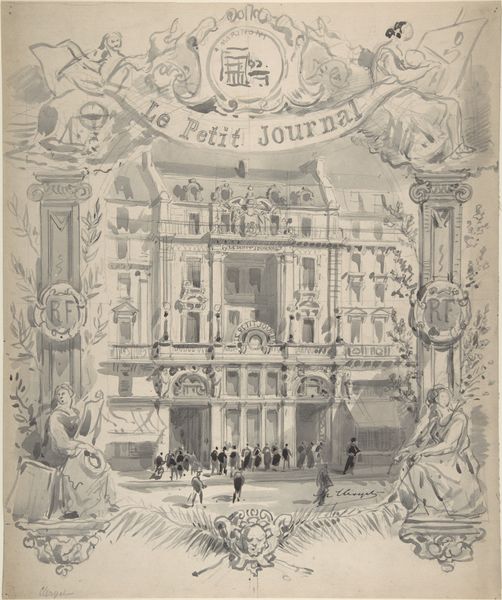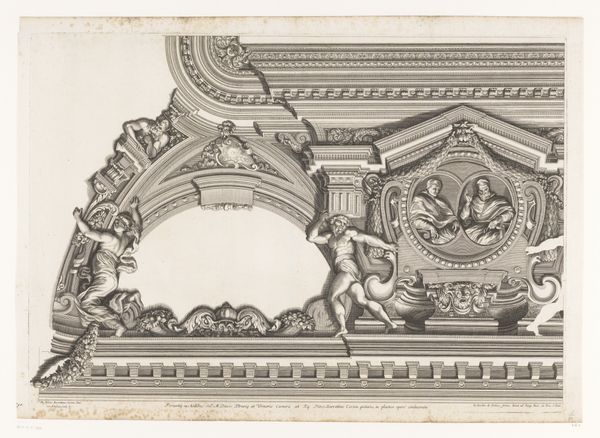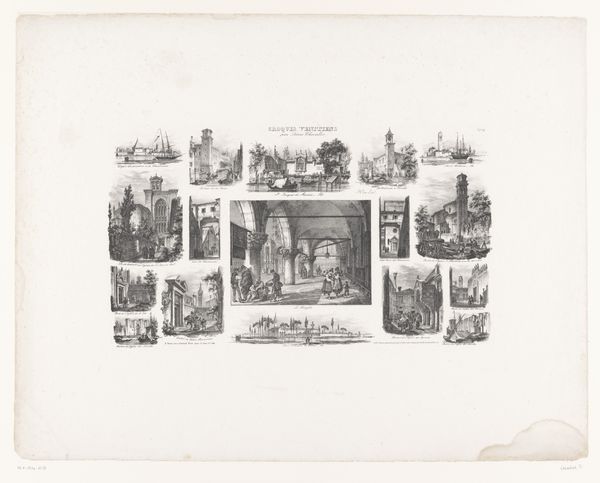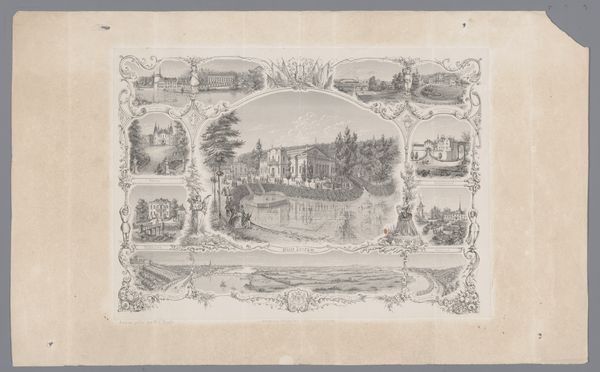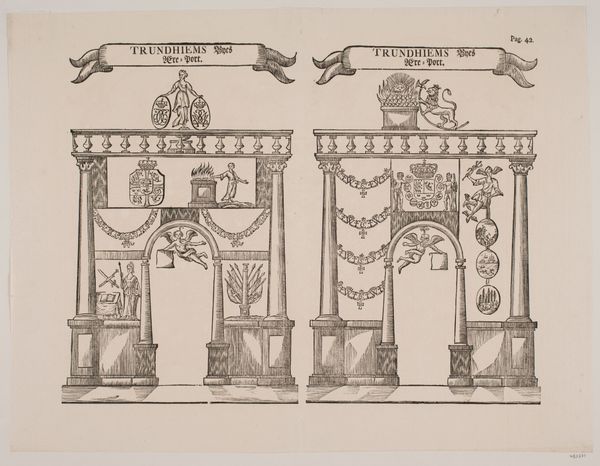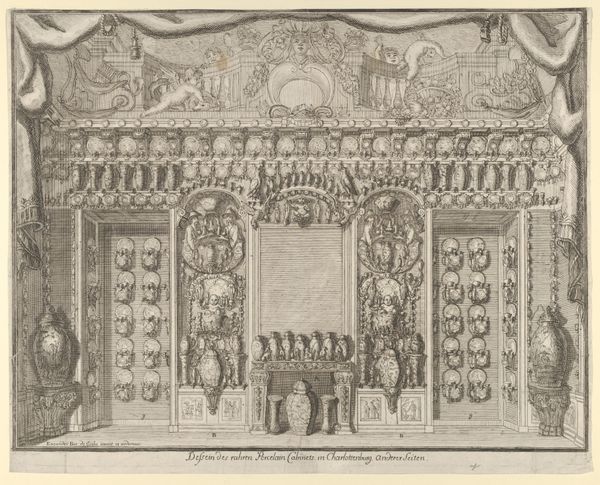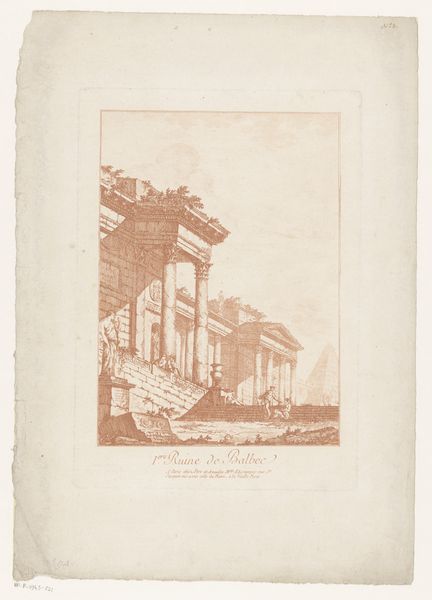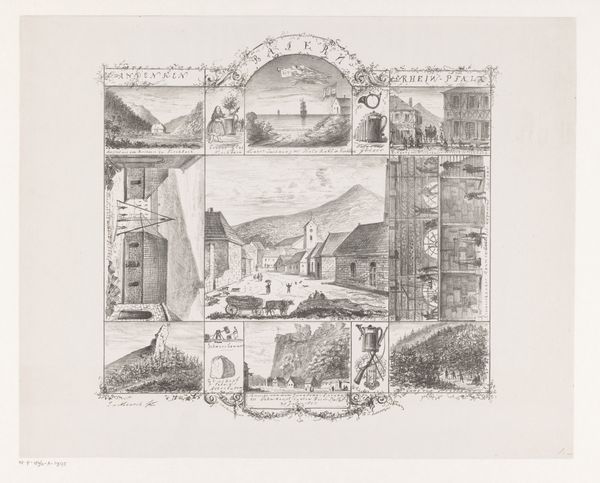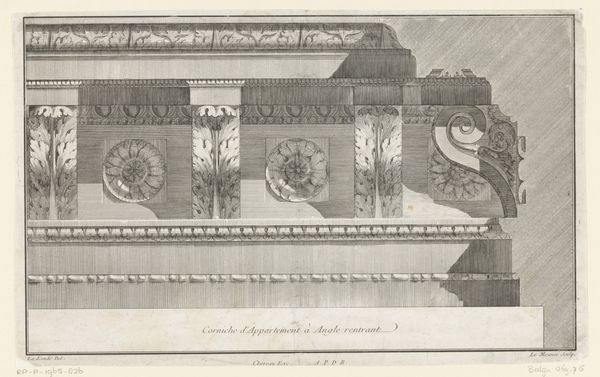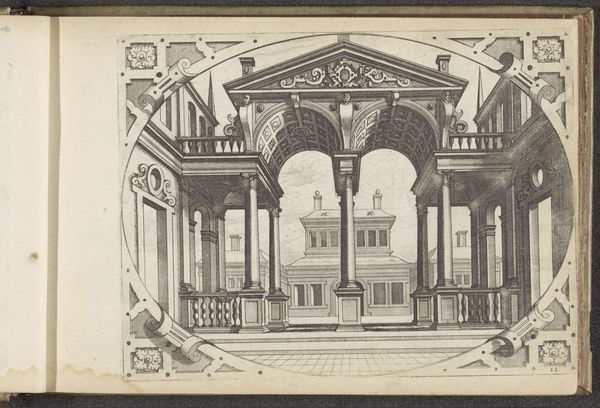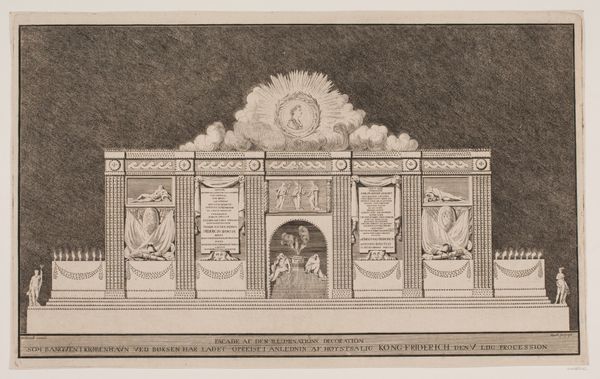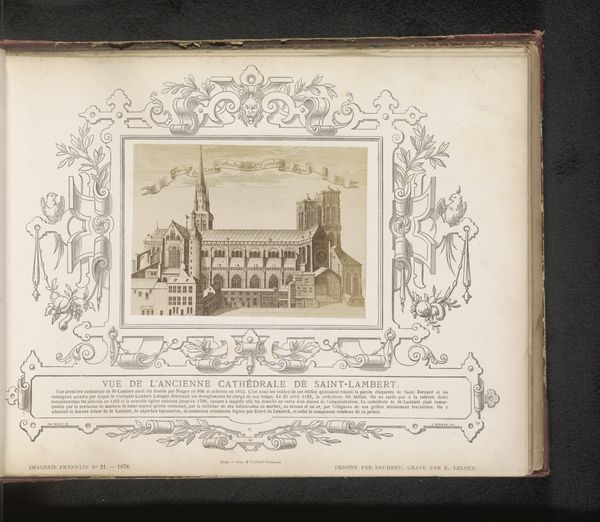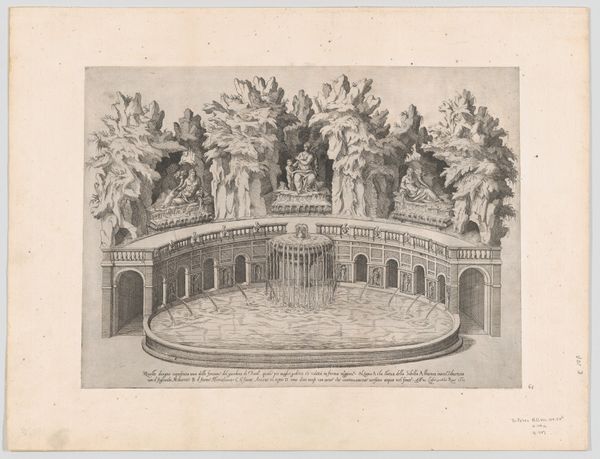
drawing, print, paper, engraving
#
drawing
#
aged paper
#
toned paper
#
parchment
# print
#
old engraving style
#
sketch book
#
landscape
#
paper
#
personal sketchbook
#
old-timey
#
romanticism
#
pen and pencil
#
line
#
sketchbook drawing
#
cityscape
#
history-painting
#
storyboard and sketchbook work
#
engraving
Dimensions: height 210 mm, width 275 mm
Copyright: Rijks Museum: Open Domain
Friedrich Wilhelm Rossbach created this calling card in the 19th century, using etching, a printmaking technique that relies on corrosive materials. The design is complex, featuring architectural elements, landscapes, and a central arrangement of cards bearing Rossbach's name and Amsterdam address. This wasn't just a functional object, it was a statement of status. The etching process allowed for the creation of multiple, identical cards, and Rossbach could distribute them widely, expanding his professional network. Consider the labor involved. Each card required careful design, meticulous etching, and printing. The etcher’s skill is evident in the fine lines and intricate details. The card also reflects the rise of a commercial culture, where personal branding and marketing became essential for success. Rossbach presents himself as both a businessman and an artist. By appreciating the materials, labor, and context of this calling card, we see how even everyday objects can reflect broader social and economic transformations, blurring the line between commerce and art.
Comments
No comments
Be the first to comment and join the conversation on the ultimate creative platform.
